Carones Vision | Increasing Autonomy Results in a More Engaged Staff and Happier Patients.
FRANCESCO CARONES, MD; AND AMANDA CARDWELL CARONES, MPH


As a husband-and-wife team who works together professionally (Figure 1), we have learned how to effectively balance raising our two children with running Carones Vision in Milan, Italy. In both settings, one of our most important goals is to create an environment that allows individuals to flourish. In the office, that is accomplished by generating and encouraging a positive company culture. The following dialogue provides a peek into some of the tactics we use.
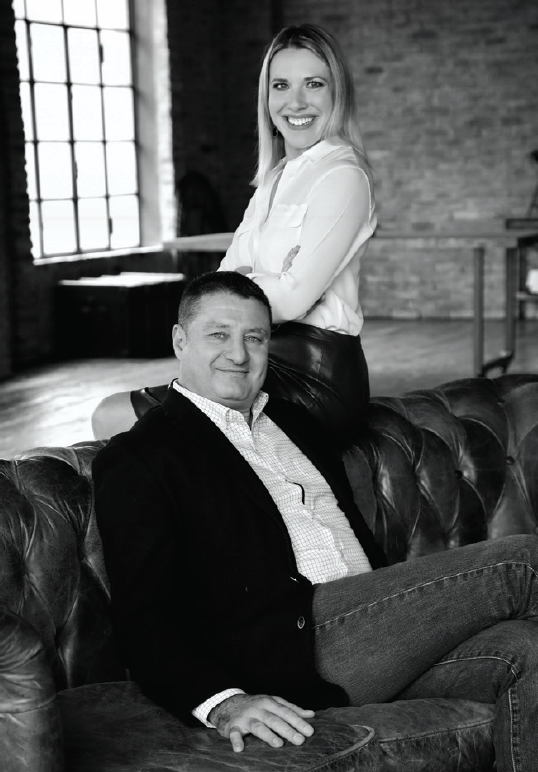
Figure 1. Francesco Carones, MD, and Amanda Cardwell Carones, MPH, work as a husband-and-wife team.
Amanda Cardwell Carones, MPH: My career path has allowed me to work with doctors and staff from all over the globe—from New York to California, from Germany to Dubai, from Singapore to Italy. As diverse as cultures can be, some things are almost undoubtedly the same. The first question I usually hear when I speak with a doctor or office administrator is, “Can you help us with marketing?” My response is always the same, “We’ll see after I spend a few days in your office to understand the current situation.”
Honestly, why spend money bringing new patients into a practice that cannot properly address its existing patients’ needs?
This was the case when I first became involved with Francesco’s practice, as we chatted about work in the evenings after our long days—because eyeballs seem to be our favorite after-work topic of conversation.
Francesco Carones, MD: As a private practice, Carones Vision has always been focused on high-quality outcomes with advanced technologies. Until a few years ago, the process of educating patients and ushering them from consultation to surgery was the surgeons’ responsibility. Our orthoptists performed the initial examinations, but the one other surgeon in our practice and I were the ones who introduced lens and surgical technique options to patients. Over time, our waiting lists for visits and surgery had grown consistently longer, and we realized that a change in our management practices was necessary.
Ms. Cardwell Carones: One evening as I was cooking dinner, Francesco described the challenges they were facing at his practice. I nonchalantly asked how much time he usually spent with each patient, and he replied 45 minutes. Believing I had heard him incorrectly, I asked again; I was in absolute disbelief when he answered the same.
We talked about the current workflow, and I suggested that Francesco could significantly reduce his chair time with patients if the staff took on more of the patient education. World War III nearly broke out in our kitchen! Francesco insisted—passionately pounding his fist on the table in typical Italian style—that, because he is one of the most expensive providers in Milan, his patients expect to spend that much one-on-one time with him. I pushed back and insisted that, just as importantly, patients need to feel a personal connection to the practice, to feel heard and understood, and to be properly educated in understandable terms.
Dr. Carones: As any good husband would do, I made the changes my wife suggested (but I didn’t give her the satisfaction of knowing right away). We hired additional orthoptists and ensured that each one was properly trained on our surgical decision tree. We incorporated in-depth vision questionnaires to encourage patients to think about how they use their vision and what they would like from their future vision, thus enabling the orthoptists to initiate personalized discussions with each patient. Our orthoptists were also given the autonomy to add diagnostic tests as necessary, without surgeon approval, so that the surgeons would have all of the necessary information to make a definitive recommendation.
Over time, we eventually incorporated postoperative vision questionnaires for each surgical patient, allowing us to compare the patient’s perception of his or her vision before and after surgery. This was an important step because it helped the staff to understand the impact of their jobs on our patients’ lives.
More recently, after visiting our dear friend Vance Thompson, MD, FACS, at Vance Thompson Vision in South Dakota, we empowered our staff to seize opportunities that could brighten someone’s day. Staff members have a daily allowance that they can utilize to make someone—patient or coworker—smile. Most employees don’t use their allowance every day or even every week, but knowing that they have the autonomy to do so without asking permission has built a sense of mutual trust, respect, and pride among our team.
We are in a state of constant improvement, always learning from our colleagues in medicine and other sectors, but hiring smart people who share our values and giving them the leeway to do their best has positively affected every aspect of our clinic. We see more teamwork and more individual accountability.
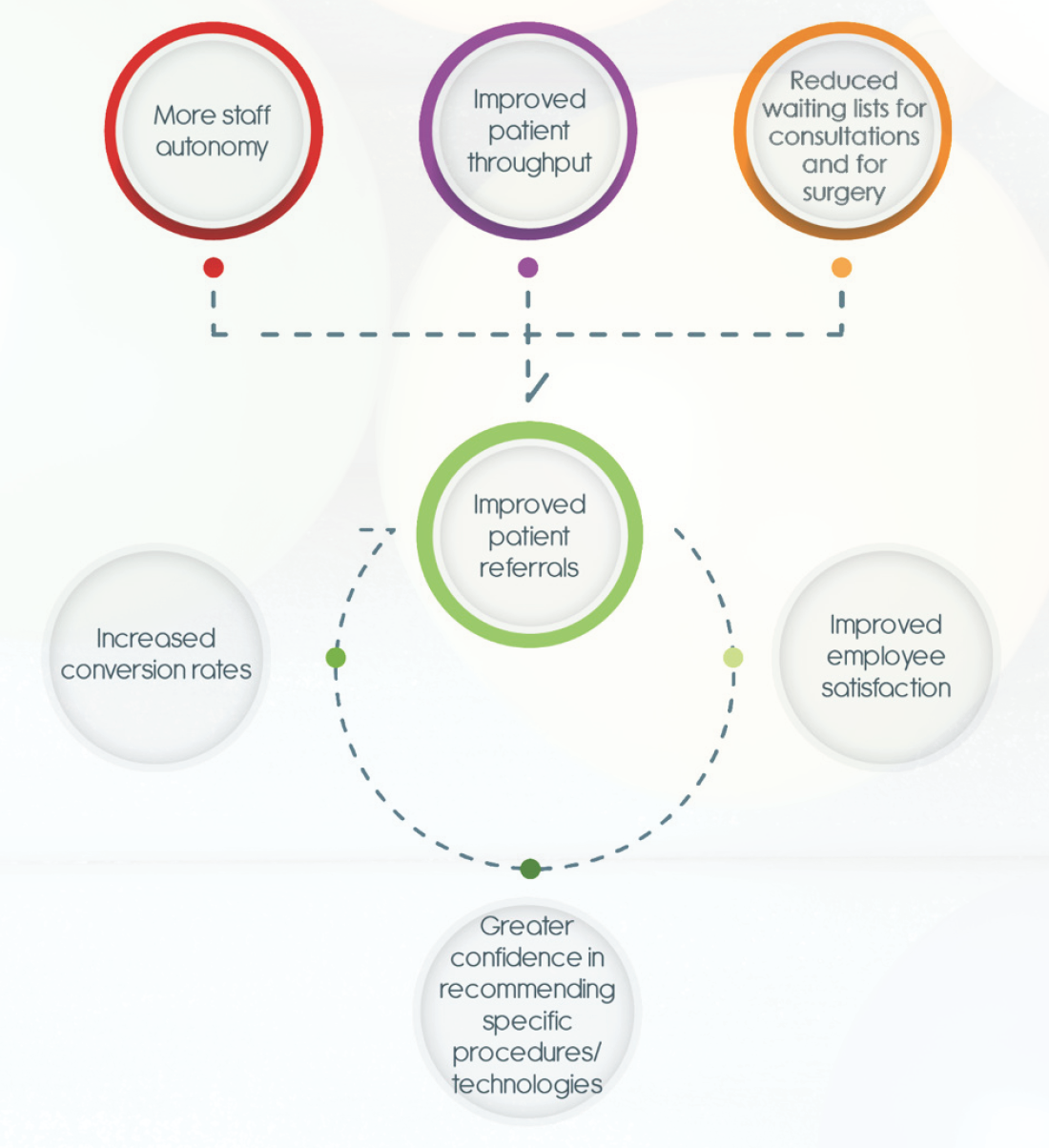
Figure 2. Depiction of the positive feedback loop at Carones Vision.
Since making the changes outlined in this article, there has been a positive feedback loop (Figure 2) resulting in:
- Reduced chair time per patient, from 45 to 15 minutes, with more patient appointments per doctor per day;
- Shorter waiting lists;
- Greater patient satisfaction (based on postvisit surveys);
- Greater employee satisfaction (based on individual staff feedback);
- Greater overall surgical volume and acceptance of advanced technology IOLs, attributed to more word-of-mouth referrals; and
- Greater confidence across the staff (including surgeons) to recommend specific IOLs based on individual patient needs.
Williamson Eye Center | A Culture of Innovation and Community Drives Continual Growth.
JOSHUA DAVIDSON, OD, FSLS
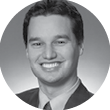
In health care, the mantra, “If you’re not growing, you’re dying,” is embraced by successful organizations around the globe. Growth has been a priority for Williamson Eye Center through its entire 68-year existence. As an optometrist and a newcomer to the practice—I’ve been part of the team for almost a year now—I have been astonished by our ability to continually exceed patient expectations at each of our four (soon to be five) locations across Louisiana.
A QUICK HISTORY
In 1951, William Williamson, OD, built one of the first multilocation eye practices in southern Louisiana. Doc, as he was called, was first and foremost the father of four boys who followed in his footsteps into eye care. Three of his sons returned to Louisiana to practice ophthalmology, and one is a physician assistant. Doc’s grandson is also a surgeon at Williamson Eye, meaning that three generations of Williamsons provide vision care in the Baton Rouge and middle Louisiana areas.
Williamson Eye Center has become one of the South’s largest and most respected eye centers. It has earned global recognition for its innovative surgical techniques, pioneering procedures, teaching practices, and adoption of the latest technologies. Williamson Eye continues to push ophthalmology and its own practice brand to new levels.
THE SECRET OF OUR SUCCESS
Williamson Eye Center does the common thing—providing service to our patients—uncommonly well. Our practice sees patients from all walks of life. We strive to provide both cataract and refractive surgery patients with modern options for vision correction by offering them personal service.
Having worked previously in other practices that also provide exceptional surgical care, I have found that the difference at Williamson Eye is the family environment that our staff and patients take part in. This environment is at the core of our business model. Our practice is built not only on innovation and technology but also on providing genuine care for our patients’ welfare. Instead of being built on the bottom line, our culture is built on this principle: If you take care of people, employees, and patients as family, your efforts will be rewarded with loyalty and success (Figures 2–6).

Figure 3. Left to right: Brett Williamson, PA-C; Joshua Davidson OD, FSLS; and Blake K. Williamson, MD, MPH, MS, collaborate regarding a mutual patient.
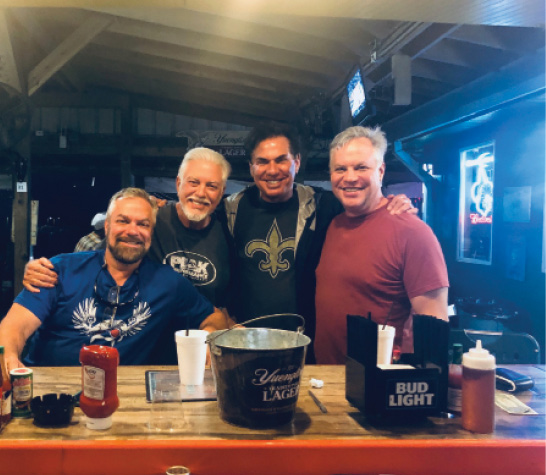
Figure 4. The Williamson brothers (left to right: J. Brett Williamson, PA-C; William R. Williamson, MD; Charles Williamson, MD; and Baron Williamson, MD) on a fishing trip in 2019.
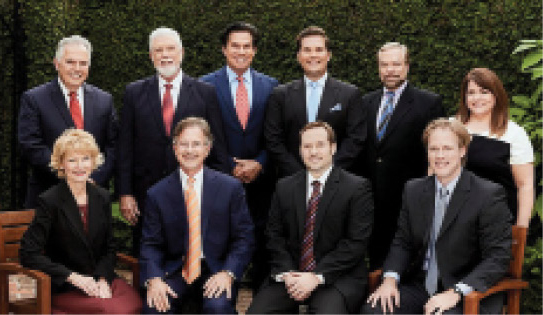
Figure 5. The Williamson Eye practitioners in 2017: (back row) Vincent Rachal, OD; William R. Williamson, MD; Charles Williamson, MD; Blake K. Williamson, MD, MPH, MS; J. Brett Williamson, PA-C; and Christine Norred, OD; (front row) Elizabeth Granger, OD; Edwin Adams, OD; Matthew Smith, MD; Cory Boudreaux, OD.

Figure 6. The main Williamson Eye surgery center with practitioners outside.
On any given day at work, it’s not unusual for me to see three generations of Williamson patients in my examination rooms. This type of longevity doesn’t occur without a good foundation of trust in our primary mission, which is to improve the vision and the lives of our patients and our community.
PRACTICE AT A HIGH LEVEL
As an OD and the newest provider within the Williamson Eye Care family, I have been encouraged to practice up to the highest level of professional practice that I am comfortable with. I chose Louisiana over my native Michigan because it has some of the most progressive laws favoring optometric practice. I met my beautiful wife and started my family and career here.
Sure, it is important to my success that I have modern technology available to me when treating patients, but equally important is that I also have mentors to learn from.
Williamson Eye is home to me, and I am sure the same might be said for our other 14 providers. Practicing and being successful under the brand Williamson Eye no longer requires the last name Williamson. My colleague, Blake Booth, MD, our practice’s newest surgeon, previously worked in other practices, and he explained to me that the difference at Williamson Eye is that the team understands the importance of combining highly advanced care with a patient-centered experience. Our team approach employs the skills of every one of us in order to achieve the best outcomes for our patients.
Charles Williamson, MD, the practice’s medical and surgical director and a practicing physician for more than 40 years, has the same vision his father had, and he has carried on the practice’s positive culture. That vision has helped guide the practice’s exponential growth since the middle of the past century. Charles believes that we are not in business to compete but rather to provide superior patient care.
One of the first pieces of advice Charles gave to me was regarding handling patients who had left another practice to come to us: Despite the situation, never throw any of your colleagues or competitors under the bus; our job is not to ruffle feathers but to smooth them down. Despite what other providers do, practice the way you would want to experience if you were the patient.
Charles believes that the true purpose of leadership is mentoring to produce more leaders, not more followers.
CONCLUSION
In the constantly changing environment of health care, a culture of innovation and community continues to permeate Williamson Eye. Riding the ascendancy of technology and being early adopters and innovators of cataract and refractive surgery procedures such as laser cataract surgery, lifestyle IOLs, and microinvasive glaucoma surgery, the Williamson Eye name has become synonymous with state-of-the art vision care through ethical care for our patients.
Our community and our patients have learned that Williamson Eye offers them the best visual outcomes in a family environment. The Williamson Eye staff has been trained and steeped in that philosophy. Our culture of innovation, integrity, and treating patients and staff as family has led to three generations of success. Every staff member knows that, although there is no CPT code for patient happiness and satisfaction, that’s priority No. 1 at Williamson Eye.
What Do You Eat For Breakfast? | At Vance Thompson Vision, Company Culture Is Built Around Three Pillars.
MATT JENSEN

The phrase “Culture eats strategy for breakfast” is often attributed to writer, management consultant, and self-described social ecologist Peter Drucker. But if culture truly eats strategy, then how does one build a culture that is predictable and reliable? Moreover, in a world in which strategy governs both day-to-day operations and larger decisions (growth into new markets, questions of whether or not to sell to private equity, decreasing reimbursement, rising team and capital costs, and the risk of physician and leader burnout), how does culture rise above strategy in importance?
Strategy alone may fall short of the changes required to breathe life into an organization, whereas a strong central culture can both set the framework for effective strategy and help course-correct the strategy during key moments in a company’s history.
THE THREE PILLARS
In our centers, we build our culture around three pillars: (1) always do what is right; (2) invest in the world’s most advanced technology; and (3) create customer and team experiences that are second to none. There are inherent strengths and weaknesses in each pillar.
Pillar No. 1: Always do what’s right. Many patients already believe we are going to do the right thing as the clinicians, surgeons, and other personnel who provide their care, simply because we wear white coats and make strong recommendations about clinical and surgical plans. This pillar is more for the team than it is for patients. We know that management and providers can cut corners to maximize profits, preserve the status quo, and stay comfortable. Differentiating one’s practice solely by doing the right thing is a strategy that, if executed well, will add baseline value, but it will fall short of full differentiation.
Pillar No. 2: Invest in the world’s most advanced technology. Investment in advanced technology is differentiation that is important for leading, premium brands to claim. But some messaging impact is lost because most patients, and even some referring eye providers, don’t understand the salient differences between various technology options. Therefore, differentiating one’s practice based on advanced technology is vital, but it would be shortsighted to focus on this pillar exclusively.
Pillar No. 3: Create customer and team experiences that are second to none. Creating a strong customer experience is an advantage that patient-customers do understand, and it resonates deeply with them. It makes them want to tell their friends and family about their experiences, and it makes them want to come back to or recommend a practice.
In the past few years, we have added another definition to this pillar: Create a team experience that is second to none. This is because of a core value that our providers, led by Vance Thompson, MD, FACS, and John P. Berdahl, MD, have lived by since Vance Thompson Vision opened in 1991. These leaders have long said that our centers must have a team-first—not a patient-first—mentality. This kind of thinking typically draws gasps from whatever audience may be listening, but considering this assertion at a deeper level reveals the essential correlation: Creating a team experience that is second to none creates a patient experience that is unparalleled.
We engage all 187 of our employees to act in a manner that aligns with the wishes of our providers and their very high standards. This maximizes the impact not only on all of our patients but also on every interaction our team has with patients, community members, friends, family members, and other colleagues. Even our competitors admire the ways in which our team members conduct themselves. Like the first two pillars, the third pillar is vital for achieving our goals of differentiation and focus, but it also provides standalone value and an incredible return on investment for our practice.
TRAINING IS KEY
The leaders of our center have written extensively about how to deliver a great patient experience. If our practice has been known for its focus on the patient-customer experience during the past 15 years, then it will be known for our investment in building and maintaining a team experience in the next 15 years. We must achieve this goal in order to create an excellent patient experience.
We have long been proud of how well our team adapts to the standards set by our leaders. We have found that, after just a few months of observing behavior modeling, our new employees begin to treat each other and our patient-guests much like our more experienced providers would.
How can this care be replicated in other markets, in other centers, and with new staff, providers, and leadership? Can culture be bottled?
In a word, no. For years, businesses like ours were small enough to model the behavior most desired by leadership. Team members, in turn, would begin performing to those standards simply by environmental influences. We used to think that this qualified as training. However, when an organization grows, it can become difficult for the modeled behavior to reach all the way to the front line. Well, that is not training; it is simply exposing. What was a noble effort when the business was small can lack predictability as the business grows because of the varying environments in which the team finds itself during growth.
This is where training comes in: Through role-playing scenarios and situational examples that give team members opportunities to practice engaging and building relationships with the people in front of them, we can turn an exposure program into a training program. This, combined with testing, accountability, repetition, and gamification, creates the hope that what has become a winning culture can extend beyond the four walls of one center.
Creating a team that desires to create a customer experience that is second to none Consistent team training should be businesses’ first priority. Our teams are as hungry for this as our patient-customers are to receive it. With hunger comes appetite. So, Druker had it right years ago: Culture does eat strategy for breakfast. What are you eating?
Parkhurst NuVision | Define Your Mission Statement, Then Envelop It in Culture.
GREGORY D. PARKHURST, MD, FACS
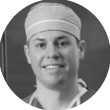
Company culture can make or break your business. But, in every sense of the word, culture is intangible and therefore hard to explicitly define. Ultimately, your company culture will develop organically over time, and it will largely depend on how you interact with your employees and how they interact with each other. But at the outset, crafting your practice’s mission statement is the perfect jumping-off point from which to start defining your culture.
When I decided to go into private practice and opened Parkhurst NuVision, we were intentional about defining our mission statement—our reason for existing and our vision of what we would endeavor to be as an organization. We decided to break down our mission statement into three bullet points:
- We do vision correction surgery,
- for important guests,
- of referring optometrists.
Once we had a clear picture what we wanted to do as an organization, we began to interview and hire people for our team whom we thought would be in sync with our vision. Hiring for personality rather than skill set has been a winning strategy for our practice. We can teach people who are kind and compassionate, who have a good work ethic, and who have good customer service skills how to test visual acuity and how to take a medical history, but it is difficult to teach personality and customer service.
We have also had good luck bringing on new team members based on our current team members’ referrals. This is a valuable strategy to build company culture. When team members recommend that a friend or family member apply for a job with us, they are putting their neck on the line that it will be a good match in both directions.
We employ people from diverse professional backgrounds. Some of our employees have worked in the food and beverage industry, others have been teachers and worked in oil fields, and some others have even been past patients. We have gone outside of ophthalmology (and outside of medicine in general) to hire individuals who are kind and who have good customer service backgrounds, and then we teach them the ophthalmology components.
The two biggest elements of Parkhurst NuVision’s culture—and really of any organization’s culture—are the mission and then, of course, the people.
DAILY REAFFIRMATIONS
We repeat our mission statement daily, so that any time someone on our team is faced with a difficult question, he or she can think about what the answer might be through the lens of who we are as an organization. Often, employees can come to the right conclusion just by remembering who we are as a practice.
The fact that we do vision correction surgery, for important guests, of referring optometrists has informed our core values. It is reflected in how we answer the phone, how we greet patients when they come in, how we treat each other, and how we communicate with one another on a daily basis.
INVEST IN YOUR TEAM
There are several other activities that can help to promote the well-being of your culture. Of course it is important to identify and hire the right individuals and to compensate them appropriately, but you must also build the team atmosphere.
The daily huddle. For Parkhurst NuVision, that starts with our daily huddle, which is a practice that I learned from Vance Thompson, MD, FACS, and his team at Vance Thompson Vision, during a Refractive Surgery Alliance premier practice event. We’ve chosen 8:37 am as huddle time, and that is a sacred time. Every team member, even those who are currently with a patient, will stop what they are doing to attend the 5-minute daily huddle.
When an employee explains to a patient why he or she is walking away for a few minutes (“Mr. Jones, I am going to start your workup now. In a couple of minutes I am going have to step away to attend our daily team huddle. But I’ll be right back.”), the patient remains at ease and is, in a sense, reassured that he or she is in good hands.
The daily huddle time is sacred because it allows us to be face to face as a whole organization, it enforces our company core values, and it provides us with the space to talk about any interesting things that are happening that day.
Team training. Another way to invest in your team is to dedicate internal and external training resources. For example, we sponsor our executive management team to go to leadership seminars, and we send technical staff who want to gain a new skill set to formal training in clinical research. Once a year, we shut down our clinic operation for 2 days for intensive team training and building. This year, we invited a motivational speaker from out of state, and we broke into teams to make paintings of our core values (Figure 7, top). The team with the best painting was awarded a prize.

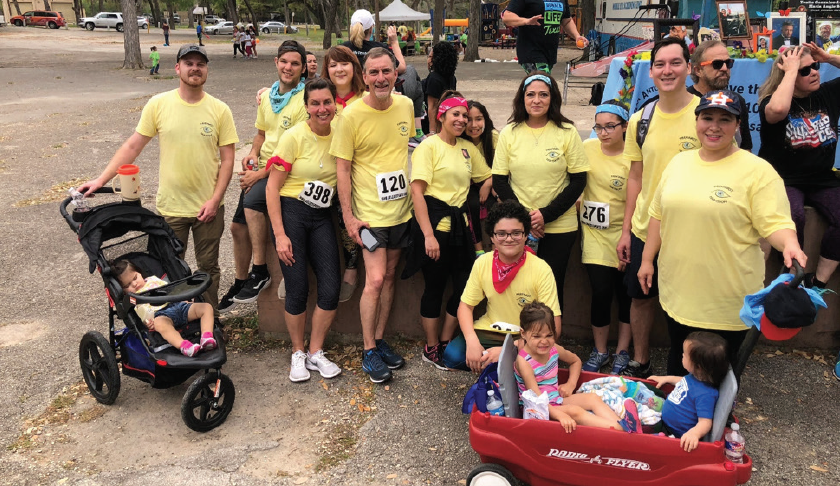
Figure 7. During team training, members broke into groups and painted pictures with the practice’s core values (top left). Team members who walked and ran in a local 5K wore Parkhurst NuVision t-shirts (bottom left).
Team-building events. We also host company-sponsored team-building events offsite, which occur about once every 2 months. We have done 5K races (where we wore matching t-shirts; Figure 7, bottom), and we have hosted simpler activities like renting out a meeting room and giving everyone game cards for Dave & Busters. Just recently, we took our employees to a San Antonio Missions minor league baseball game (Figure 8).
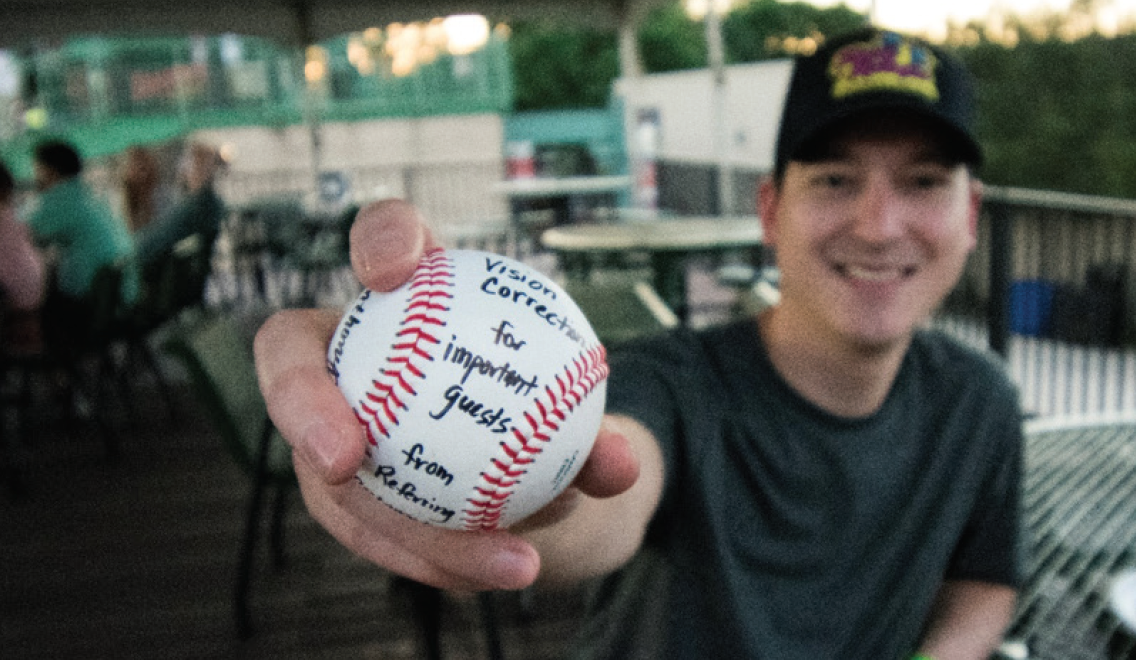
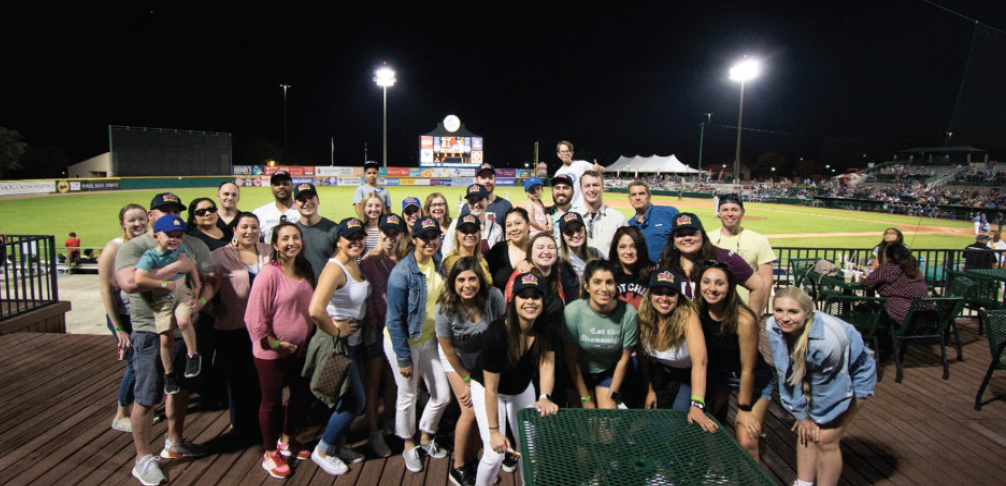
Figure 8. Parkhurst NuVision team members at a minor league baseball game (top and bottom right).
Regardless of the activity, we specifically set aside a few minutes at every event to reinforce our company core values and mission. At the baseball game, we rented the party deck, danced with the mascot, and gave each team member a baseball with a sharpie to autograph and write our core values on as a keepsake.
PROUD MOMENTS
I have had many proud moments as the Physician-CEO of Parkhurst NuVision. I think one of the things I am most proud of is that many of our team members have referred someone close to them to work here. This means that we’re hitting home and delivering a high-quality culture to our team and to our patients.
Another thing that I am really proud of is that, 2 years in a row, Parkhurst NuVision has been named one of the top three places to work in San Antonio by the San Antonio Current. This award is not in the medical category alone: Any business in San Antonio is eligible. The other two winners this past year were the US-based insurance company USAA and Texas’ largest grocery chain H-E-B. To be listed as among the top three places to work alongside these amazing Texas companies is humbling. It means that people are excited about Parkhurst NuVision’s mission. They’re excited about coming to work. They love their team members. And they feel fulfilled in the work that they do.
Waring Vision Institute | The Art and Science of Assembling and Fostering a World-Class Team.
GEORGE O. WARING IV, MD, FACS
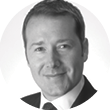
The Waring Vision Institute was founded with the following mission statement: To provide a world-class client experience by fostering a culture of mutual trust, respect, and collegiality. Our mission statement is reviewed at every team meeting, and it is shared at every educational event that we host for our prospective clients.
Over the years, our friends and mentors have taught us the value of staff satisfaction. In short, staff satisfaction drives client satisfaction. To this day, this has been our driving principle, and we are laser focused on it.
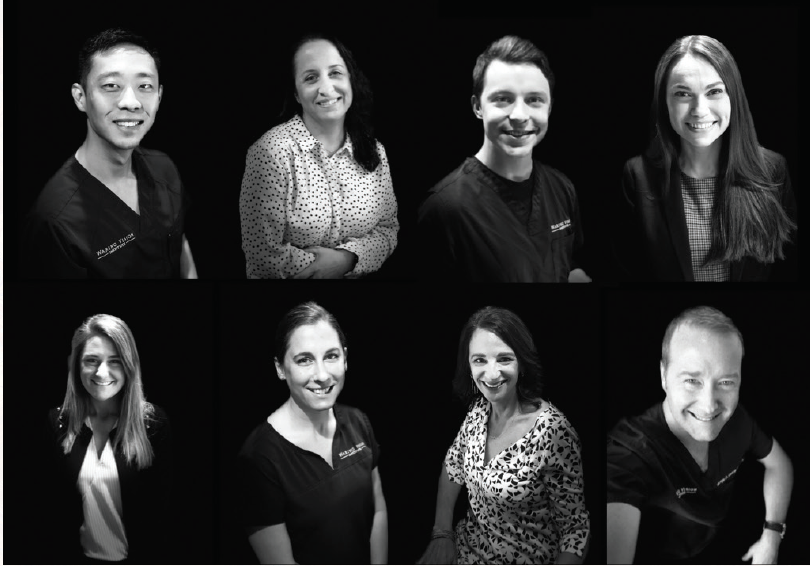
Figure 9. Members of the Waring Vision Institute team.
It stands to reason that a world-class client experience starts and ends with a world-class team. Therefore, we set out to assemble a world-class team (Figure 9). This is evidenced by our clients who leave online reviews to celebrate our staff along with their new vision (Figure 10).

Figure 10. Client testimonials from the gallery on the Waring Vision Institute website (https://www.waringvision.com).
GROWING THE WARING VISION FAMILY
The following seven observations have led to the assembly and growth of our work family.
No. 1: Hire the smartest people, period. I have found the single most predictive factor in workplace performance to be academic performance, including advanced degrees. One of my mentors taught me to surround myself with people smarter than myself, and I have found this to be great advice.
No. 2: Hire based on academics, healthy lifestyle,
personality, and ambition. Anyone can be trained to learn a skill set, but few can be trained on these intangibles.
No. 3: Create a culture in your vision. Your team represents three things: you, your brand, and your practice. Build a culture that is consistent with both your brand and your vision.
No. 4: Make the team’s health and wellness priorities. We have incorporated the health and wellness of our team into our company culture. We hire team members who live healthy lifestyles, and we promote health and wellness in everything we do.
No. 5: Empower your team; it is your most valuable currency. We promote from within, and we play to people’s strengths and interests.
No. 6: Publicly promote your staff. Do so at every opportunity, even in your clients’ presence, and teach your staff to promote each other.
No. 7: Push your team members to their highest potential. Our goal is to support them to be the best version of themselves.
CONCLUSION
Providing a service for a quality-of-life improvement such as vision correction is enormously satisfying. But assembling and fostering a world-class team can be even more gratifying. We are only as good as our team, and our world-class team at Waring Vision Institute has been the catalyst in creating a world-class client experience.
Cleveland Eye Clinic | A Family Atmosphere Breeds Camaraderie.
WILLIAM F. WILEY, MD

In a dynamic and quickly evolving economy, it is often difficult to attract and keep the most competent employees. Employee retention affects your company culture, and it is an often overlooked key to maintaining a successful practice. One helpful strategy to ensure that your valued employees aren’t lost to another medical practice is to promote a family atmosphere.
Leaders in many practices that are going through a growth phase by building new offices or acquiring existing practices realize that the positive work environment they created in their small practice is difficult to carry over as the business grows. Growing pains often affect communication among all levels of staff, contributing to a breakdown of systems that trickles down to influence the quality of patient care.
High employee turnover is not only detrimental to the positive culture of a practice, it is also costly. It puts strain on the staff members who stick with you, as they can become frustrated and struggle with additions to their already heavy workloads. Turnover like this builds resentment and interferes with communication and teamwork, leaving you with an unhappy staff. Further, if your most competent employees leave because they are unhappy, the success of your business is at risk. On the other hand, a highly competent, engaged, and happy staff allows the physician to practice more efficiently and the business to grow.
BEING PROACTIVE
As the business of health care becomes more competitive, there are more venues for employees to speak out regarding environment issues at their workplace. Negative online postings or complaints on social media can have the potential to decrease employee engagement.
We have found that it is important to be proactive rather than reactive. We make a concerted effort to promote a positive work culture by creating a family atmosphere in our offices. Building camaraderie results in a high-functioning team. Communication flows freely, and employees work at their best. The focus shifts from negative work experiences to career satisfaction, which is crucial to a positive culture and, ultimately, to the quality of patient care.
ENCOURAGING ENGAGEMENT
To encourage teamwork, we cross-train employees at all levels. Cross-training, although it may seem at first glance to be job-threatening, allows employees to pitch in when needed because they have the knowledge to do so. When employees step up to fill in for others, they soon learn that what goes around comes around. This turns thoughts of “that is not my job” into offers to help their work family.
Growth of our practice over recent years has resulted in more opportunities for upward mobility within the practice, so we have had the ability to give talented and ambitious employees the chance to take on more responsibility. This has in turn resulted in better retention. Employees invested in their careers and their company realize that there are growth opportunities within the practice so there is no need to leave.
To encourage employee engagement, we took a tip from Vance Thompson Vision: We hold company-wide social events that include staff and their families when appropriate. These outings allow staff members to bond, build memories, and develop mutual respect.
Because our practice has eight locations, we have eight social events each year. We allow each center to plan one event per year and invite the entire company. These events have included summer picnics, a trip to the local zoo and rainforest, a river cruise, bowling, and toboggan ride excursions. We also have an annual holiday party at which we issue awards, complete with red carpet, that the employees have voted on. The prizes are given in categories such as “best car,” “class clown,” and “most innovative.”

Figure 11. Staff members took to the Nautica Queen on a Cleveland Eye Clinic social event.

Figure 12. Therapy dog day at Cleveland Eye Clinic.

Figure 13. One of the staff awards given out at the practice’s 2018 holiday party.

Figure 14. Staff members at a local ice hockey game.
Each year we also produce a company yearbook featuring headshots of all employees plus photos captured at the year’s work events (Figures 11–14 are pages from Cleveland Eye Clinic’s 2018 yearbook). This helps memorialize the positive experiences the teams have had over the year, and the annual release creates bonding experiences and reminiscences among the staff members over the past year’s events. Sometimes employees even have other staff members sign their yearbooks.
POSITIVE CULTURE, POSITIVE IMPACT
We have found that a positive work culture that embodies a family atmosphere breeds engaged and happy employees. A happy staff, in turn, has a positive impact on patient care while lowering costs and reducing employee turnover. We value our staff members, and we strive to show them that they are appreciated and that we realize their combined efforts are crucial to high-quality patient care and the success of the business.


